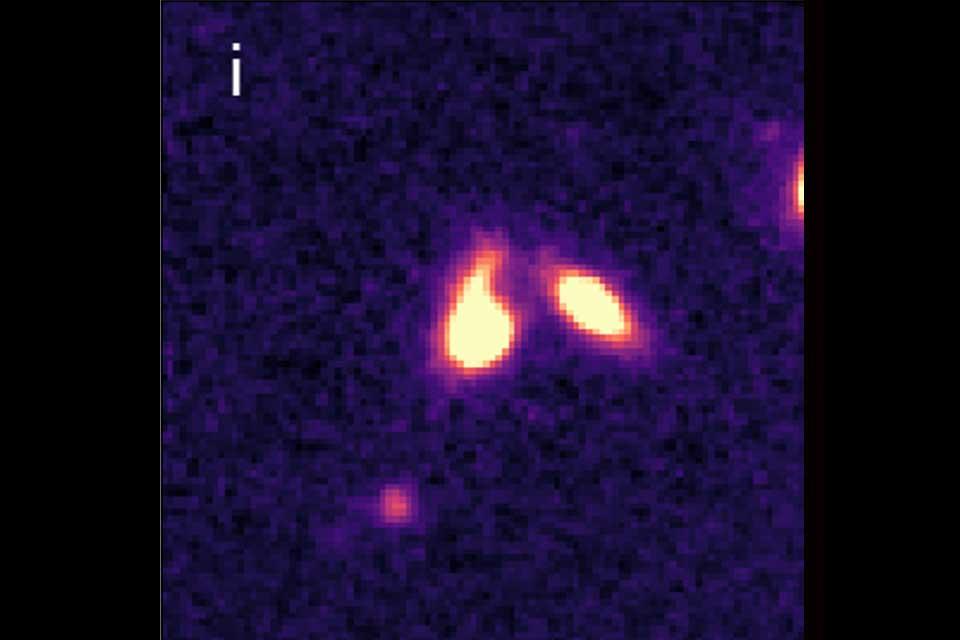Astrophysicists at the University of Oxford have discovered the brightest and most distant extragalactic hydroxyl maser from an untargeted survey with the MeerKAT radio telescope in South Africa. The maser is at a redshift of z=0.7092, which corresponds to a time when the Universe was roughly half its current age, and the maser is over 40,000 times brighter than our Sun.
Masers are produced from stimulated emission, the same physical process that we use to create lasers. Hydroxyl (OH) masers are found in some of the dustiest galaxies in the Universe: mergers with other galaxies occur which provide the conditions necessary to “pump” the OH molecules to higher energies; from these higher energies, they produce photons that can further stimulate emission from other OH molecules. This causes amplification of the energy at that specific frequency. It can result in very bright emission lines that can be observed at radio frequencies.
Professor Matt Jarvis led the group: ‘The newly discovered OH maser is likely to be gravitationally lensed by a galaxy that lies halfway between us and the maser source, resulting in a magnification of the OH emission lines. This discovery paves the way for studying such sources across a vast swathe of cosmic time with both MeerKAT and the Square Kilometre Array in the future. It allows us to pin down the merger rate of galaxies when they are at their most difficult to characterise due to being enshrouded by dust.’

